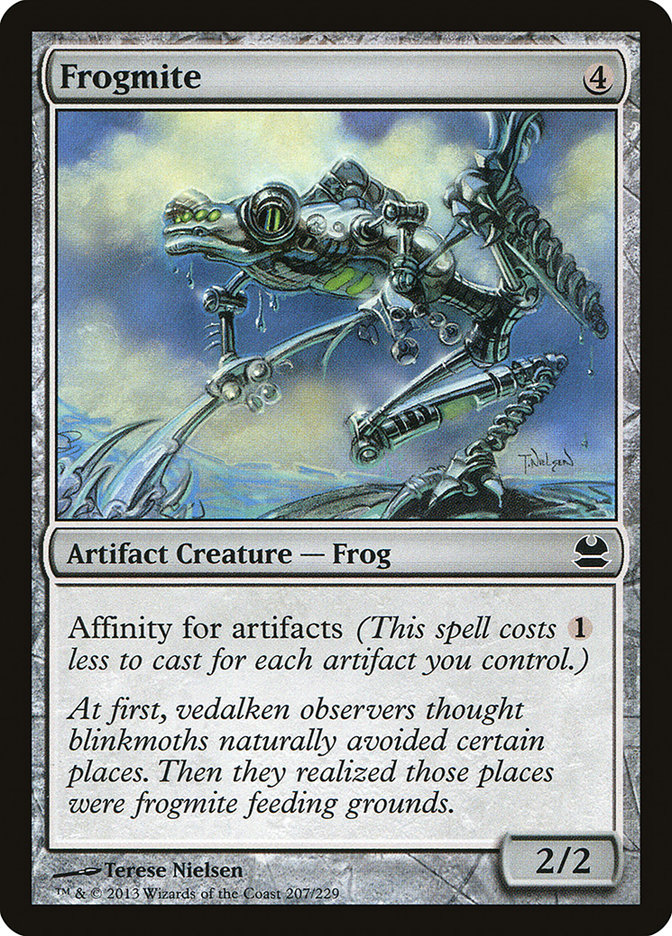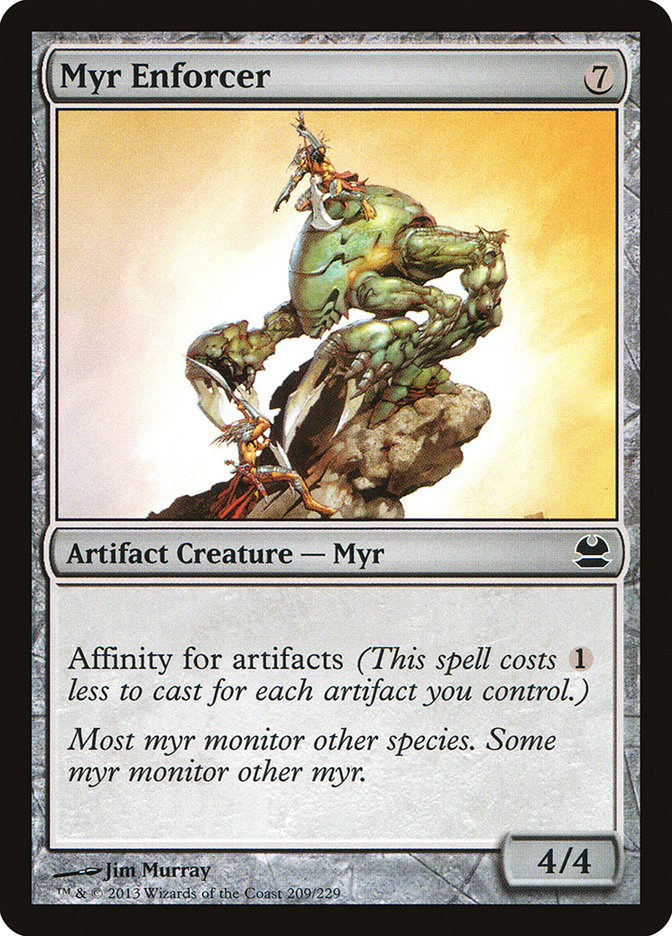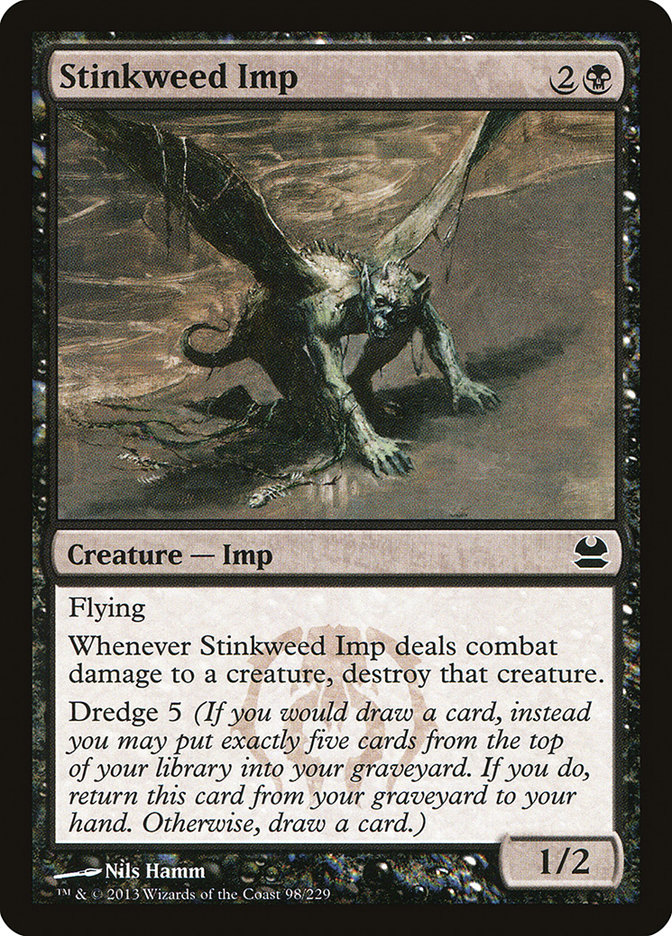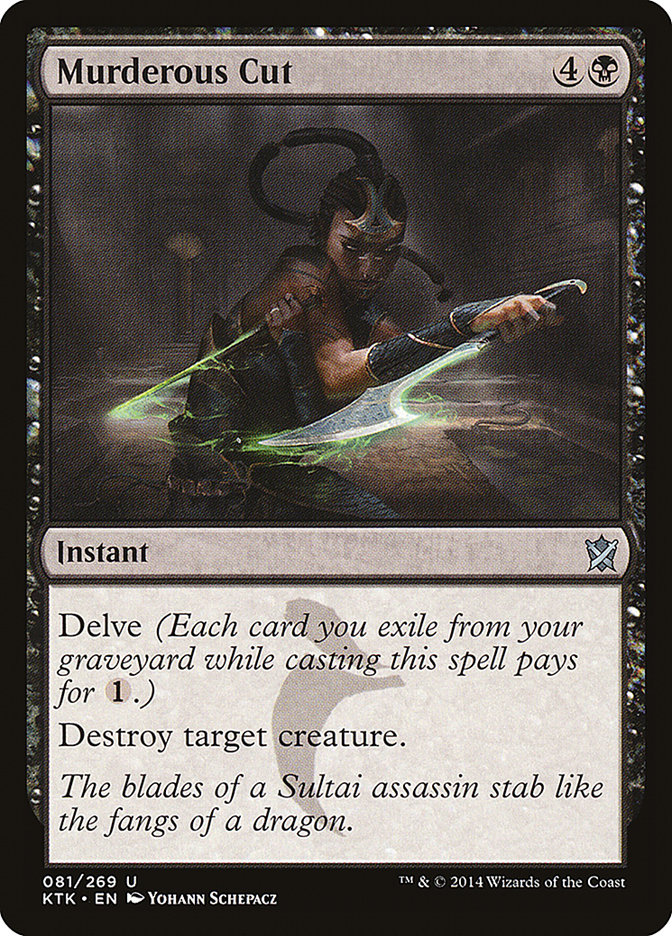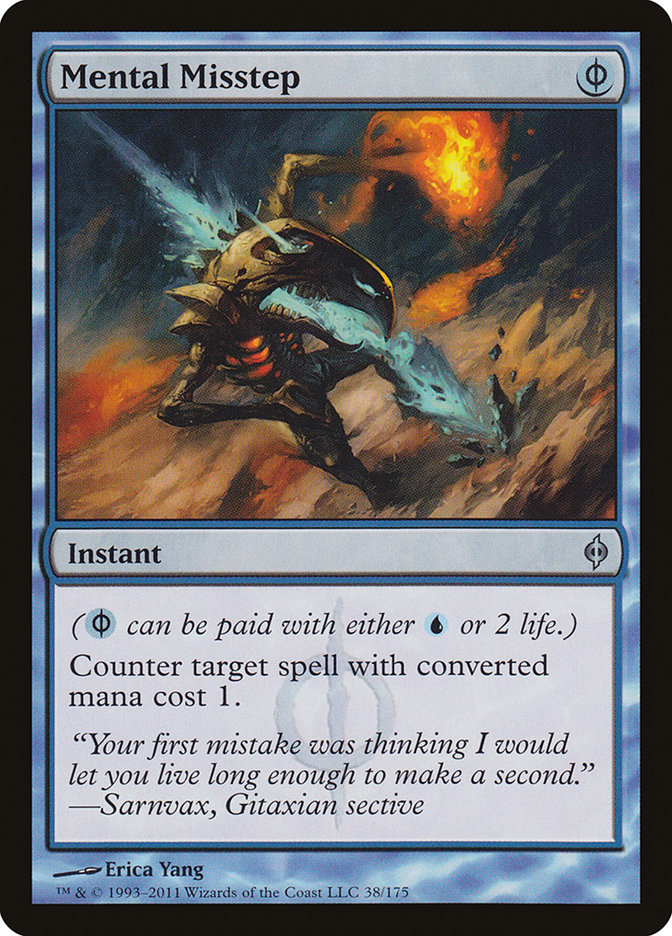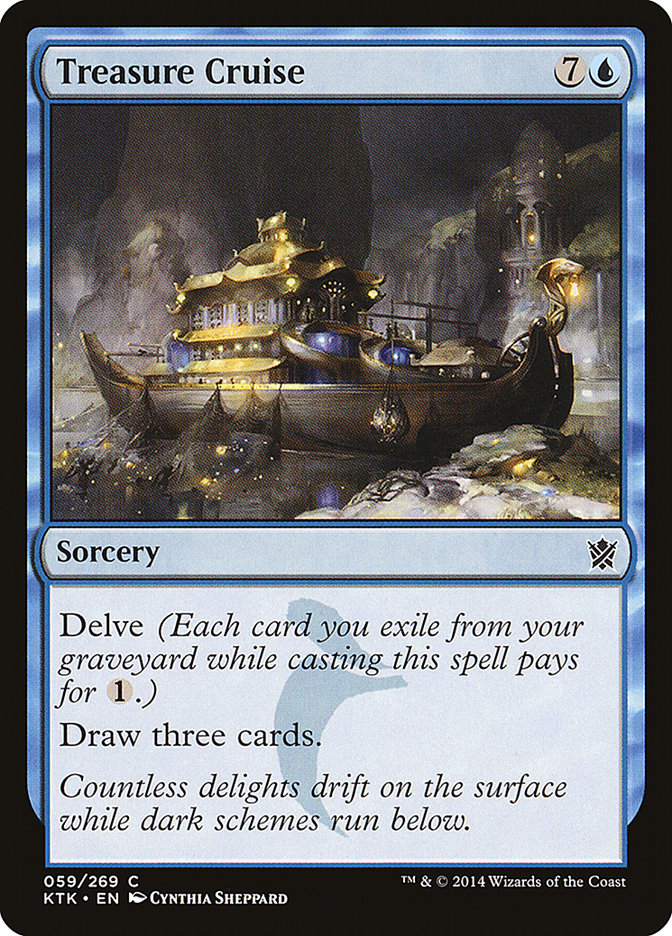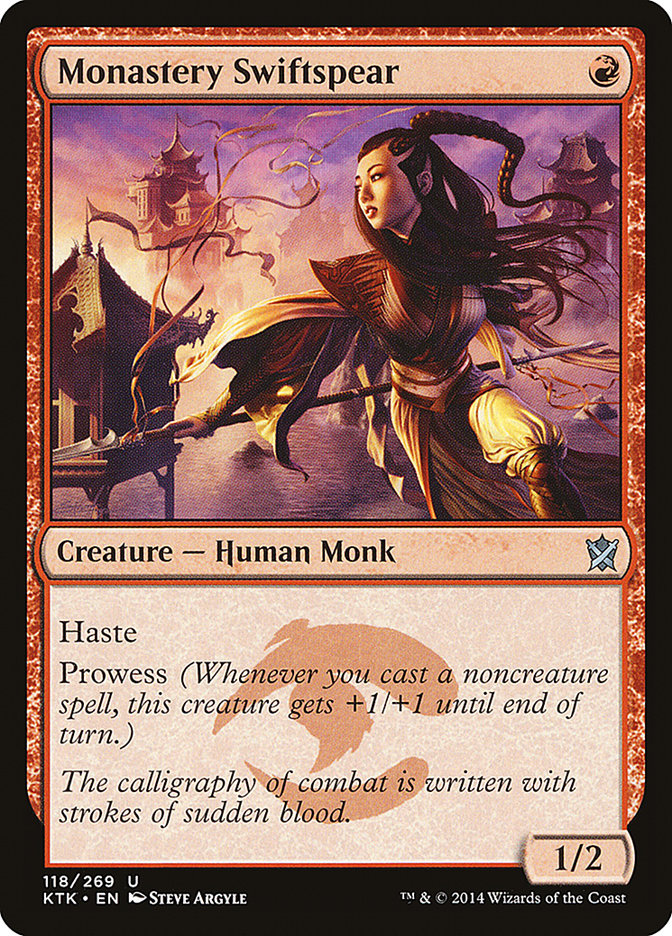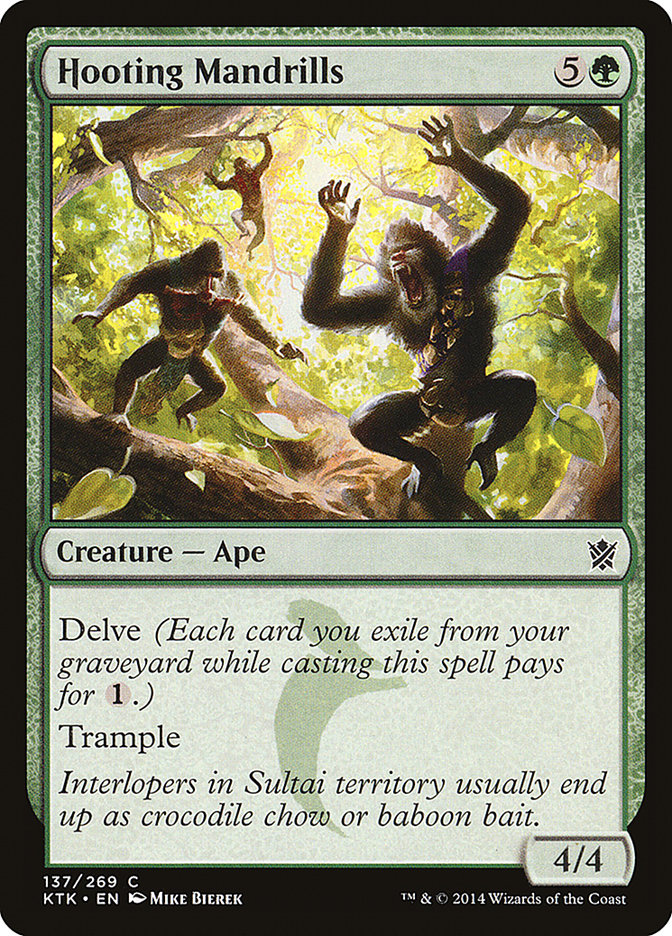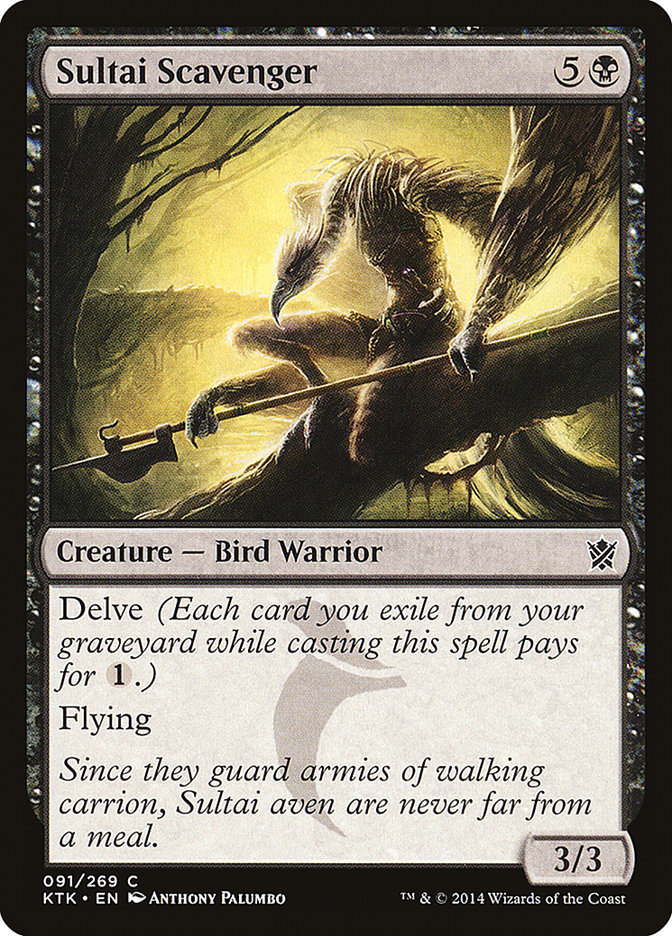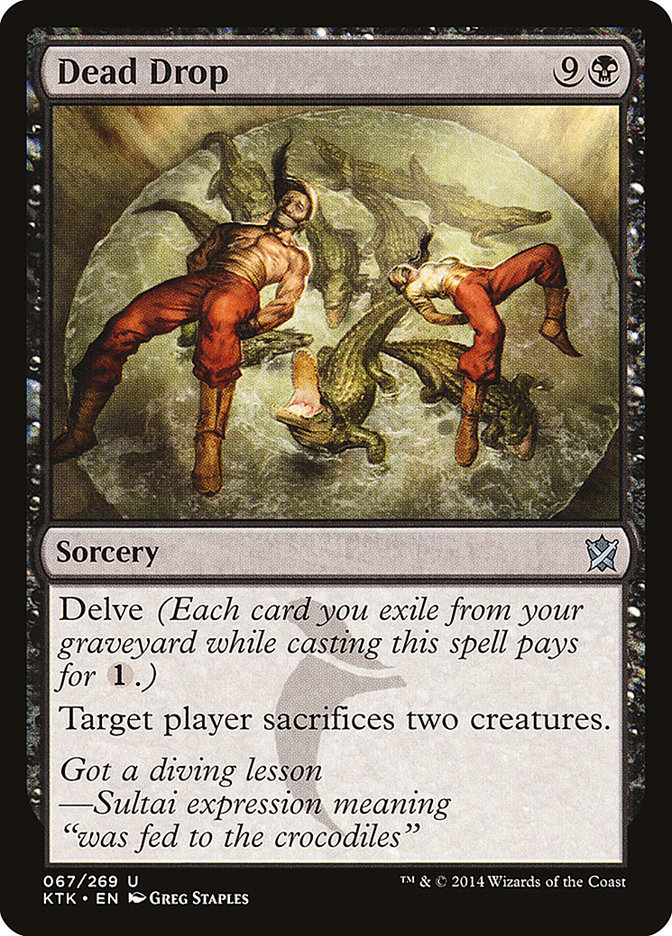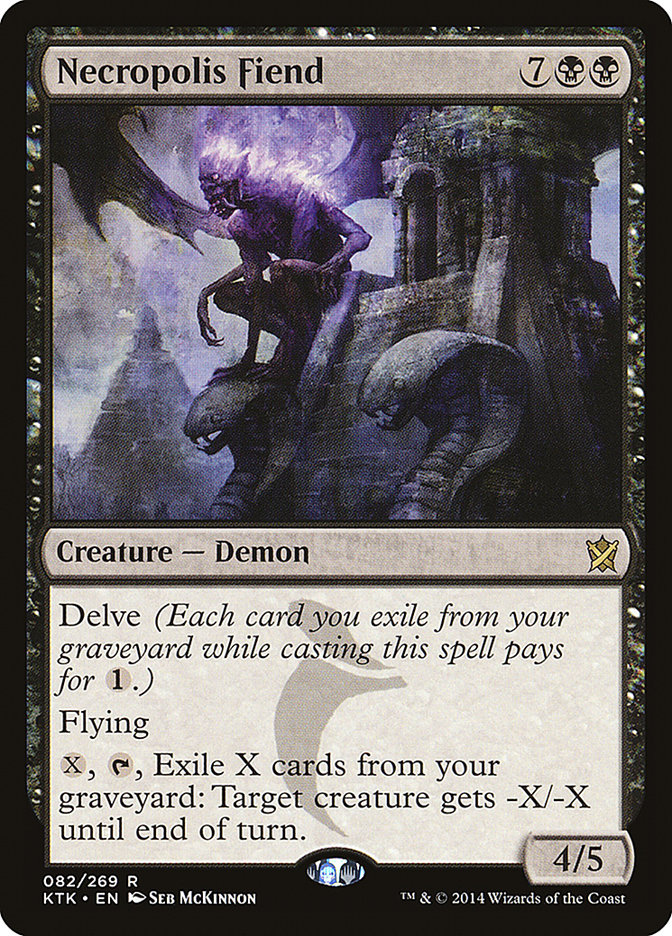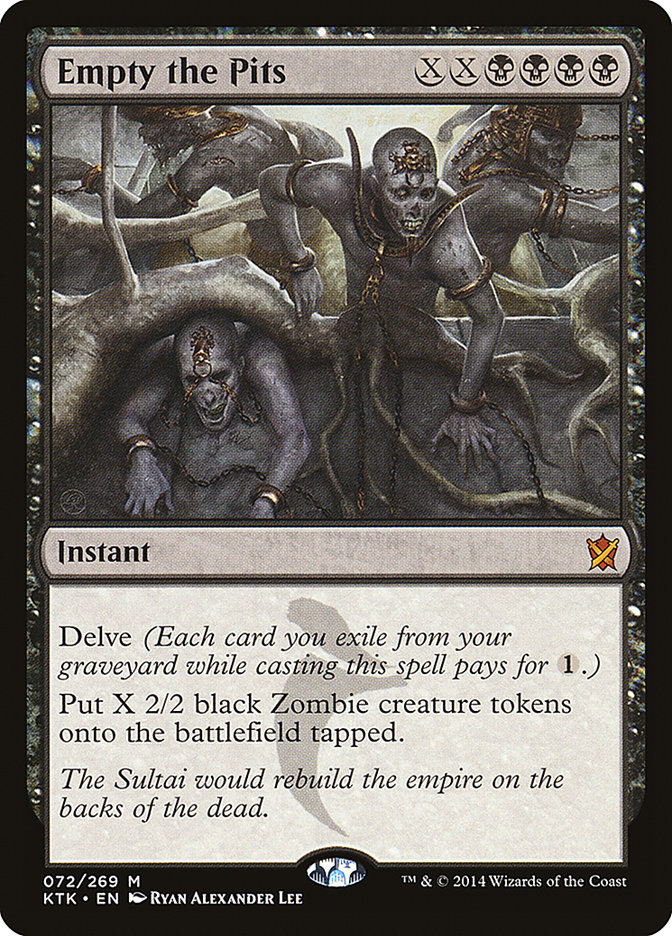Is delve too powerful?
Throughout Magic’s history, we’ve seen mechanics come and go, some leaving their mark while others are left to memory. The ones we remember are the ones
that, usually, left a negative impression. What do you think of when I say the following words?
Affinity
I think of Arcbound Ravager, Thoughtcast, and Myr Enforcer. I think of Artifact Lands, cheap spells, and dying after casting three copies of Oxidize on the
first three turns. I think of maindeck Viridian Shamans, but mostly I think of losing. Affinity, in all its infamy, was one of the worst mechanics every
printed because it gave us access to incredibly powerful spells for very little mana. Sound familiar?
Dredge
I think of Breakthrough, Careful Study, and Bridge from Below. I think of a million zombies hitting the battlefield alongside a Flame-Kin Zealot after my
entire hand is ripped apart by Cabal Therapy. I think of being helpless while my opponent utilizes their graveyard as a resource to play free or cheap
spells, all while accumulating a significant advantage that is nearly impossible to overcome by conventional means.
…
Until now, the only thing delve made me think of was Tombstalker, and maybe Death Rattle, but mostly because I played a lot of Time Spiral
Limited. Tombstalker has long since been a part of Legacy, albeit a small one in recent times, but with it came a sense of mystique. The delve mechanic was
first “spoiled” in Future Sight as a way for us to see into the future. What would Magic be like in ten years? Twenty? While one or two cards with Delve is
probably fine for Eternal formats, what kind of world will it look like when we have access to ones that are more playable than Death Rattle?
While delve might not end up being as powerful as these two mechanics, and especially so in Standard, I’m looking into the future of two other formats that
I know and love: Modern and Legacy. With so many ways to fill up your graveyard with very little effort, how much can they push these bigger delve spells
before they’re too good?
When was the last time that a new set produced a mechanic that immediately won a major Legacy tournament in the first week? Has there ever been a time when
two mechanics immediately won a Legacy tournament upon release? The only one I can remember was this little annoyance.
And do you know what happened to Mental Misstep in just a few short months? It was banned. Phyrexian mana was a powerful mechanic because the one mana
spells were virtually free. In Eternal formats, your life total matters much less when you can leverage that free mana into tempo or velocity. We’ve seen
the effects of Phyrexian mana across Modern and Legacy, with Birthing Pod and Gitaxian Probe, since Mental Misstep got the axe (and even preemptively so in
Modern). With that said, can you imagine a world where Splinter Twin gets access to Mental Misstep?
But the card of the hour, and the one you will most likely see dominating Legacy tournaments in the near future, is a virtual reprint of Ancestral Recall.
At first glance, this card doesn’t feel like it should be good, right? Either they made the cost way too high and it is unplayable, or it is far
too good to have seen print. Ancestral Recall is one of the most powerful spells of all time, and arguably better than Black Lotus, but when you start
comparing a spell that has just seen print to a spell that has long since been restricted in our oldest format, it deserves a second look.
Treasure Cruise is not Ancestral Recall. We can’t cast it on Turn 1 without a lot of crazy stuff happening. The second copy is also (generally) worse than
the first one, since it will require exiling most of our graveyard, but I can see a world where we are constantly cantripping for value. With so many
cheap, powerful draw spells at our disposal, it will be easy to find ways to turn on future copies, all while digging for our win conditions.
I think the one card that makes Treasure Cruise unbelievable, and worth playing so many card drawing effects, is Young Pyromancer. Every time we cast
Gitaxian Probe, Ponder, Brainstorm, or anything really, we will be rewarded with a 1/1 Chris VanMeter token. While Treasure Cruise will usually draw us
into more card drawing spells (which is not usually something you want to do), that doesn’t really matter when we’re constantly generating advantage and
being rewarded…just for casting them.
Monastery Swiftspear complements this strategy well. While giving a creature +1/+1 isn’t necessarily better or worse than making a 1/1 CVM, the fact
remains that we are still generating small advantages while casting all of these dig spells. If there ever was a format where prowess would be at its best,
it is Legacy. And with the addition of delve tacked onto Ancestral Recall, the number of spells you can cast every turn will be limited only by your mana,
as opposed to you potentially running out of cards or flooding.
While Monastery Swiftspear doesn’t look busted on paper, and even now I’m hesitant to give it a spin, I can only imagine how it must play out in actual
games. While digging for Young Pyromancer, Force of Will, or lethal burn spells, you are dealing incremental damage for a very low cost. In all honesty,
the fact that Swiftspear made such a quick impression on Legacy makes me want to take a second look at Seeker of the Way in the format, a card that has
already made it into multiple decklists in Standard.
But I’m not even sure if Bob Huang’s U/R Delver deck from the Legacy Open in New Jersey is actually good. In fact, I would argue that his deck is actively bad, mostly because he has so few ways to interact with the opponent and has so few burn spells. Generally speaking, you should choose one or the
other when building a U/R Delver deck. Treasure Cruise will reward you for interacting with your opponent, but it will also reward you for playing burn
spells. Focusing more on one or the other is important, because you either want to kill your opponent or just lock them out of the game. But the one
message I got, loud and clear, is that Treasure Cruise is a dee-light.
With that knowledge under my belt, here is where I would start with a Delver deck in Legacy to abuse Treasure Cruise.
Creatures (12)
Lands (19)
Spells (29)

As you can see, this list is similar to the one played by my buddy Will Cruse in the Top 8 of the Season Three Invitational a short time ago. I appreciated
a lot of what his deck was doing, attempting to interact with his opponent nearly every turn. But now, in doing so, we get a huge payoff with Treasure
Cruise.
Gerry Thompson’s article from yesterday talked about Treasure Cruise and how
it was similar to Ancestral Vision. In his Shardless Sultai deck, created long before the Khans of Tarkir clan, all he ever wanted to do was interact with
his opponent, giving himself enough time to set up and resolve an Ancestral Vision so that he could bury them in card advantage. Much like Gerry, I don’t
think that Ancestral Vision is where you want to be anymore, as Treasure Cruise gives you that same payoff without as much investment.
When every blue deck on the planet can choose to interact with the opponent, usually across numerous levels, the disruption you apply to their gameplan is
rewarded nicely with a big boost in resources. This boost in resources, and raw card advantage in general, is not something we have much access to in
Legacy. In fact, that is one of the reasons why cards like Jace, the Mind Sculptor are so powerful. Raw card advantage in a format normally based on
gaining virtual card advantage or tempo seems out of place, but that raw card advantage might not be something people are prepared to overcome.
At the moment, disruptive spells like Thoughtseize and Hymn to Tourach are actually pretty great in Legacy. That disruptive element allows many fair black
decks to keep up with combo and Delver decks. But now that they have the ability to go big with Treasure Cruise, is it even worth trying to interact with
them in that way? Treasure Cruise feels like it may invalidate discard effects entirely.
In fact, it may even invalidate B/G/X in Modern as a viable strategy.
The Reason Why Delve is Good
In older formats, Tarmogoyf is a phenomenal card. It has dominated Modern and Legacy for years and will continue to do so for some time to come. But why is
Tarmogoyf so good? When Tarmogoyf first game out, we looked at it all wrong. We were positive that you had to put too much work into making it good, at
least in Standard. How good is a 2/3 or 3/4 for 1G? After all, what if our opponents never play a creature for us to kill?
The thing about Tarmogoyf that most of us missed in the early weeks was that it doesn’t take all that much to make Tarmogoyf good in a game of Magic. Most
of the time, both graveyards will just fill up for one reason or another. Creatures will trade in combat. Burn spells will be cast, either to the dome or
to take care of a Birds of Paradise. And lands will enter the graveyard via Terramorphic Expanse or Looter il-Kor.
Most of you have no idea what I’m talking about, but mostly because your only context for Tarmogoyf is that it is a defining card for Modern and Legacy,
and the tools to make it powerful exist ad nauseum. Cycles of fetchlands start it off, while Serum Visions, Thoughtseize, or Brainstorm help it continually
grow. But in Standard, we had to work a little harder to make it good. Tarfire and Seal of Fire saw a reasonable amount of play, and two-color decks played
Terramorphic Expanse instead of more copies of Forest.
But that’s just my point. In older formats, Tarmogoyf is just good, because all of the cards that end up making it large already see a lot of
play. Spells will just go to the graveyard and help it to grow big and strong with ease! And that is also my point about delve. We don’t need Thought
Scour. We don’t need Hedron Crab or whatever else to make delve good. Delve is just going to turn on in these formats because we will fill our graveyard up
quite easily with Verdant Catacombs, Lightning Bolt, Thoughtseize, Serum Visions, and the like.
It won’t be hard to make delve good because delve is just good.
The best part about delve, and how powerful it might be, is that it doesn’t need to abuse the graveyard to be good. This means that traditional “graveyard
hate” isn’t exactly prime real estate for sideboard slots in order to fight it. Tormod’s Crypt and Grafdigger’s Cage just seem laughably bad at fighting
Treasure Cruise.
If you want to fight delve against a deck that uses it like they use Tarmogoyf, might I suggest Relic of Progenitus? It will constantly attack their
graveyard, keeping it nice and small, while also giving you a bit of a payoff in the later turns of the game. That is, unless you want to be using your own
graveyard.
For those of you who want to know just how good delve will be, take a moment and think back to how many different Phyrexian mana spells have seen play in
Legacy over the years. Gitaxian Probe still sees a lot of play, while cards like Gut Shot will make the cut in sideboards every now and then. Once we find
a card that does exactly what we want it to do and is incredibly cheap (or free), what spells fit the bill?
Now, I’m not saying Hooting Mandrills will see Legacy play, but it might. One mana for a 4/4 trampling creature is nothing to sneeze at. And when you are
playing it in Modern to bring back Vengevine, isn’t that exactly the kind of thing you want? Who wants to be casting Noble Hierarch when you could be
casting Hooting Mandrills? You may laugh now, but I would not be surprised if this card ends up being a mainstay in Modern, simply because the delve
mechanic is so powerful, and it plays so well with Vengevine.
But as we put more and more cards into our deck that abuse the delve mechanic, we are slowly forced to enable it. This means playing more cards like
Thought Scour, Satyr Wayfinder, and the like. And in the case of Hooting Mandrills alongside Vengevine, we probably want to go pretty hard on the graveyard
theme. The natural pairing? Dredge.
And now we’re getting into dangerous territory. We’ve already seen Golgari Grave-Troll get the axe in Modern, but where does it stop? Stinkweed Imp is
pretty strong alongside Faithless Looting, but a single dredge can fuel multiple delve spells over the next few turns. What happens when you get two
dredges or three? And at what point do you start to look at other delve possibilities?
I’m not sold that the card-draw spells in Modern are good enough to justify moving all-in on dredge and delve as your backbone, but the synergy between the
two mechanics can’t be ignored. On top of that, what does it say about delve when it works hand-in-hand with one of the most degenerate mechanics of all
time?
Effects on Standard
The effects of delve on Standard are not yet fully explored. We’ve had a few run-ins with Sidisi, Brood Tyrant alongside Murderous Cut and Necropolis
Fiend, but overall it doesn’t seem like there are too many ways to abuse it….yet. If delve ends up being as good as I think it is, at what point do we
start looking at cards like Returned Centaur and Necromancer’s Assistant? Right now, everyone is leaning on Commune with the Gods and Satyr Wayfinder, both
fine cards that give you a little bit of value while you dig for specific creatures or lands. But I would not be surprised to see Scout the Borders, an
inferior version of Grisly Salvage, see a lot of play in the coming months.
But the one card that not very many people are talking about is Empty the Pits.
This card just feels gross. I’ve seen it cast a few times out of the Sidisi deck that Brad and I worked on for the Open in New Jersey, but where
else could it go? Is there a dedicated control deck that could trade resources all game, just to set up an Empty the Pits to seal the deal? What if Empty
the Pits just becomes the new Sphinx’s Revelation?
While drawing cards and gaining life is generally what control decks want to do, as opposed to making a bunch of zombies, the two cards function similarly
in that they give you a big payoff for interacting with your opponent throughout the entirety of a game of Magic. Delve, in this instance, is also rewarded
by having most of your interactive spells be instants and sorceries, continually putting cards into the graveyard.
The trick to making Empty the Pits good in a control deck is finding ways to draw cards or kill your opponent’s creatures without putting pressure on your
own graveyard. That means shying away from Murderous Cut and other delve cards so you can power out a huge Empty the Pits in the late game. That also means
staying away from cards like Banishing Light as your removal of choice, so that your removal spells actually hit the bin instead of staying in play.
As of now, I haven’t been able to build a stable control deck, but that is mostly due to my inexperience with the archetype in this new format. Without
Sphinx’s Revelation, it becomes much more difficult, and I don’t actually know what I need answers for. We don’t have something that will put us
immediately back into the game if our opponent hits us with a Thoughtseize or two. Jace’s Ingenuity is a solid card that will see a reasonable amount of
play, but I don’t know if I have the heart to try it out just yet.
Pro Tour Khans of Tarkir is coming very soon, and I will be in attendance. I still have a good amount of testing to do, both for Standard and Draft, but
I’ve learned a lot about the format in just a few short weeks. I have been enjoying myself in testing thus far, and I can only imagine how much better
Standard will be once we get a better picture of the best archetypes. As for now, there seems to be a plethora of viable strategies, all powerful in their
own right. Synergy is back with a bang.
And I, for one, am very happy about it.


